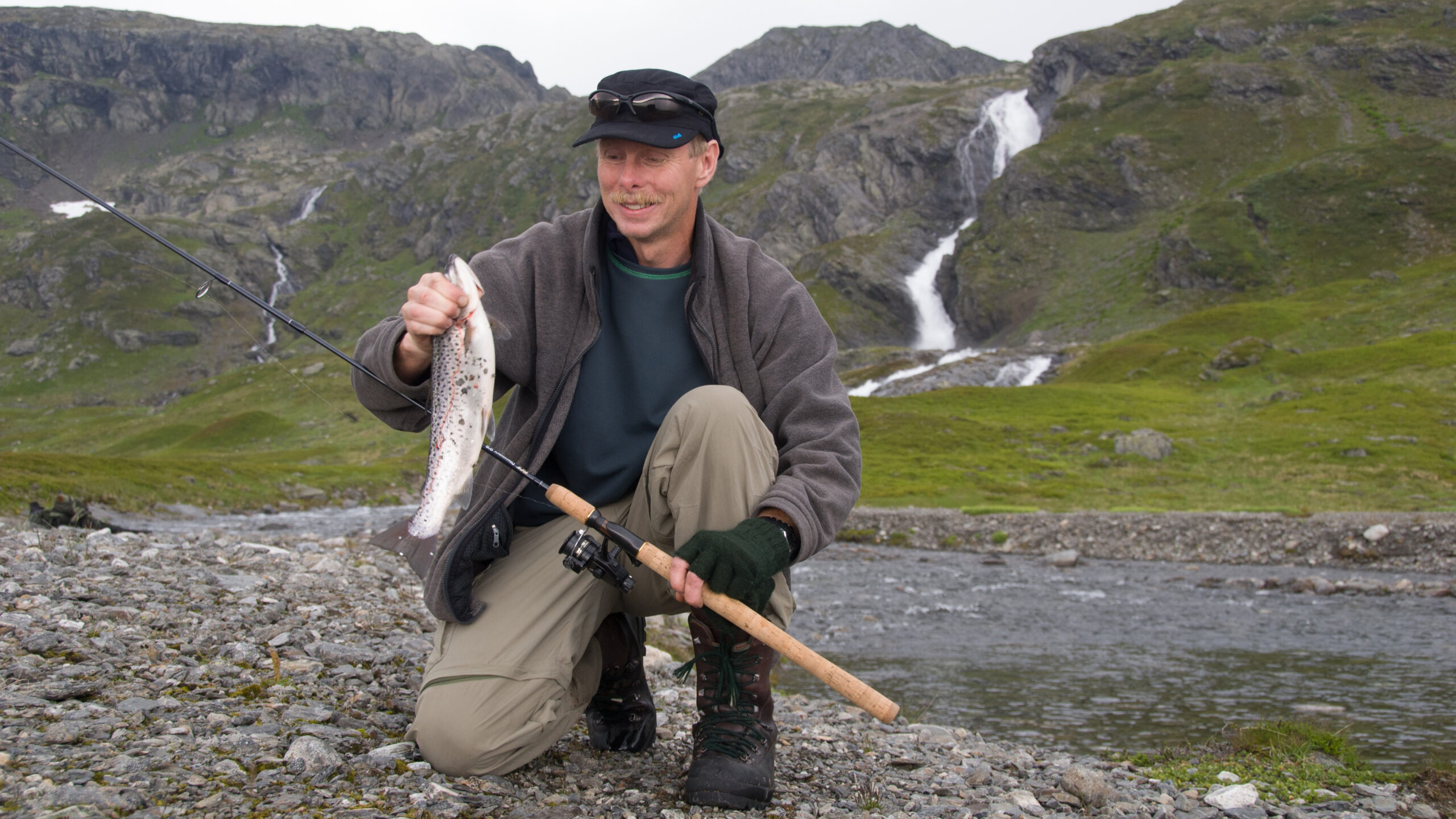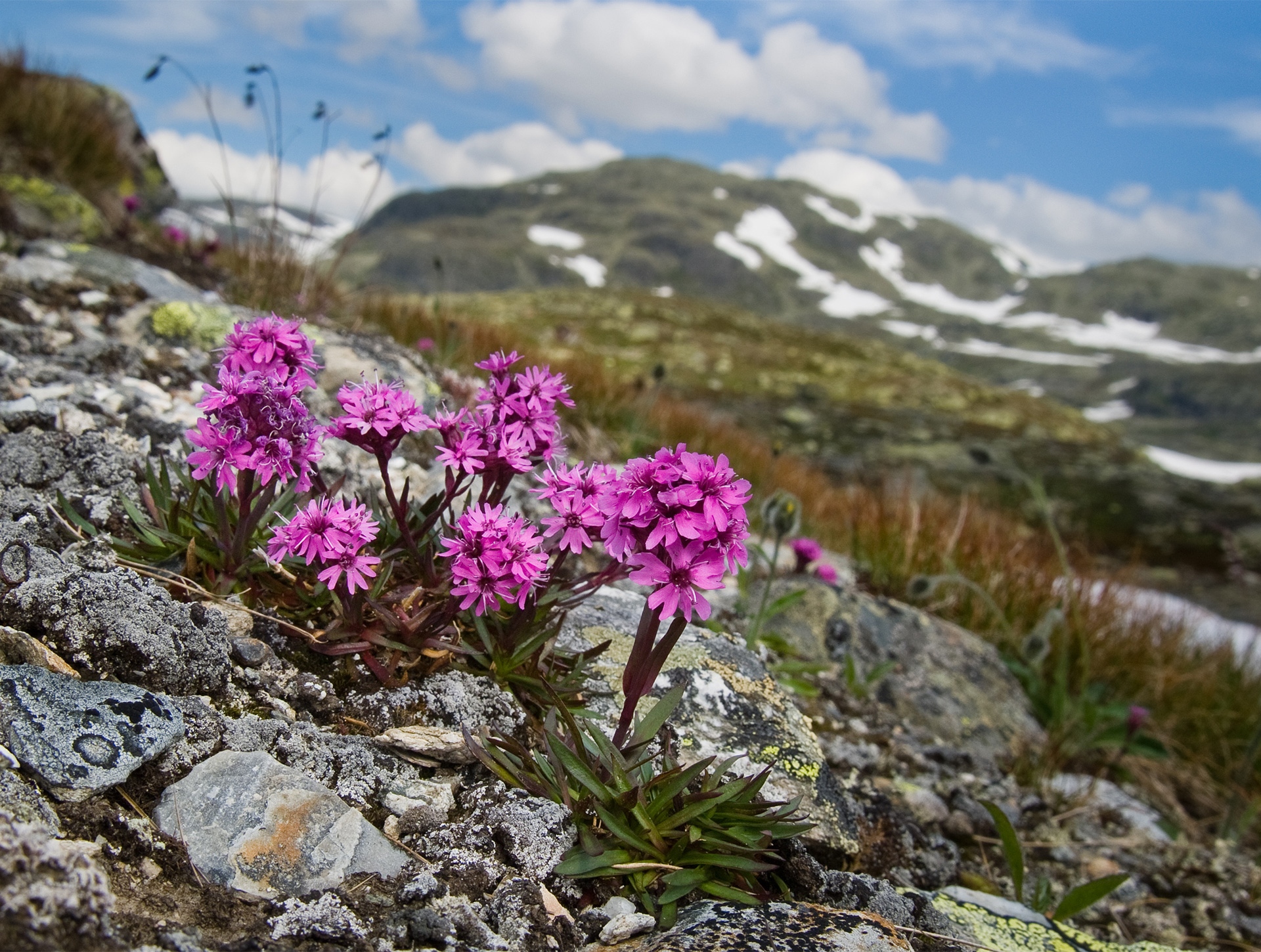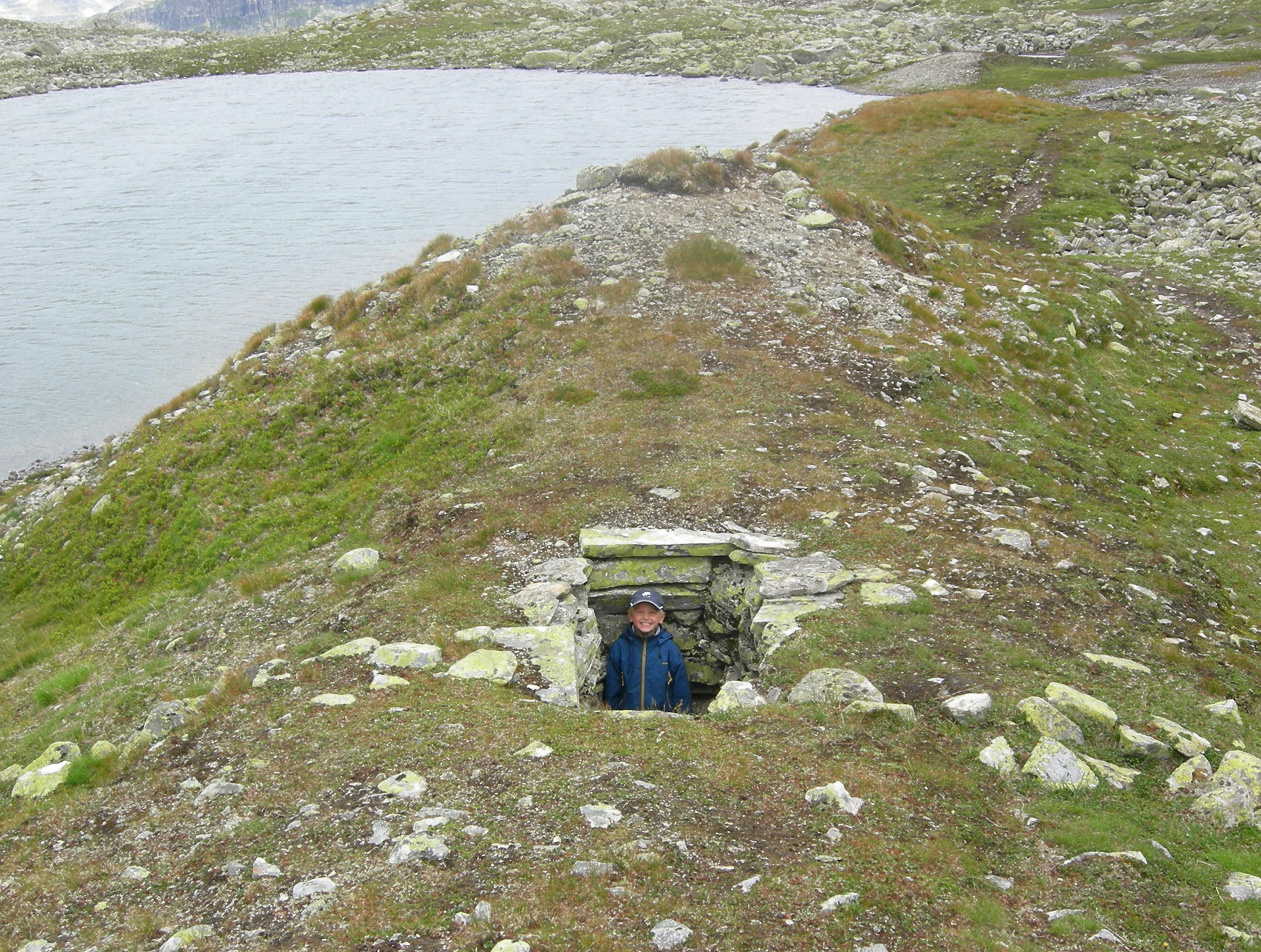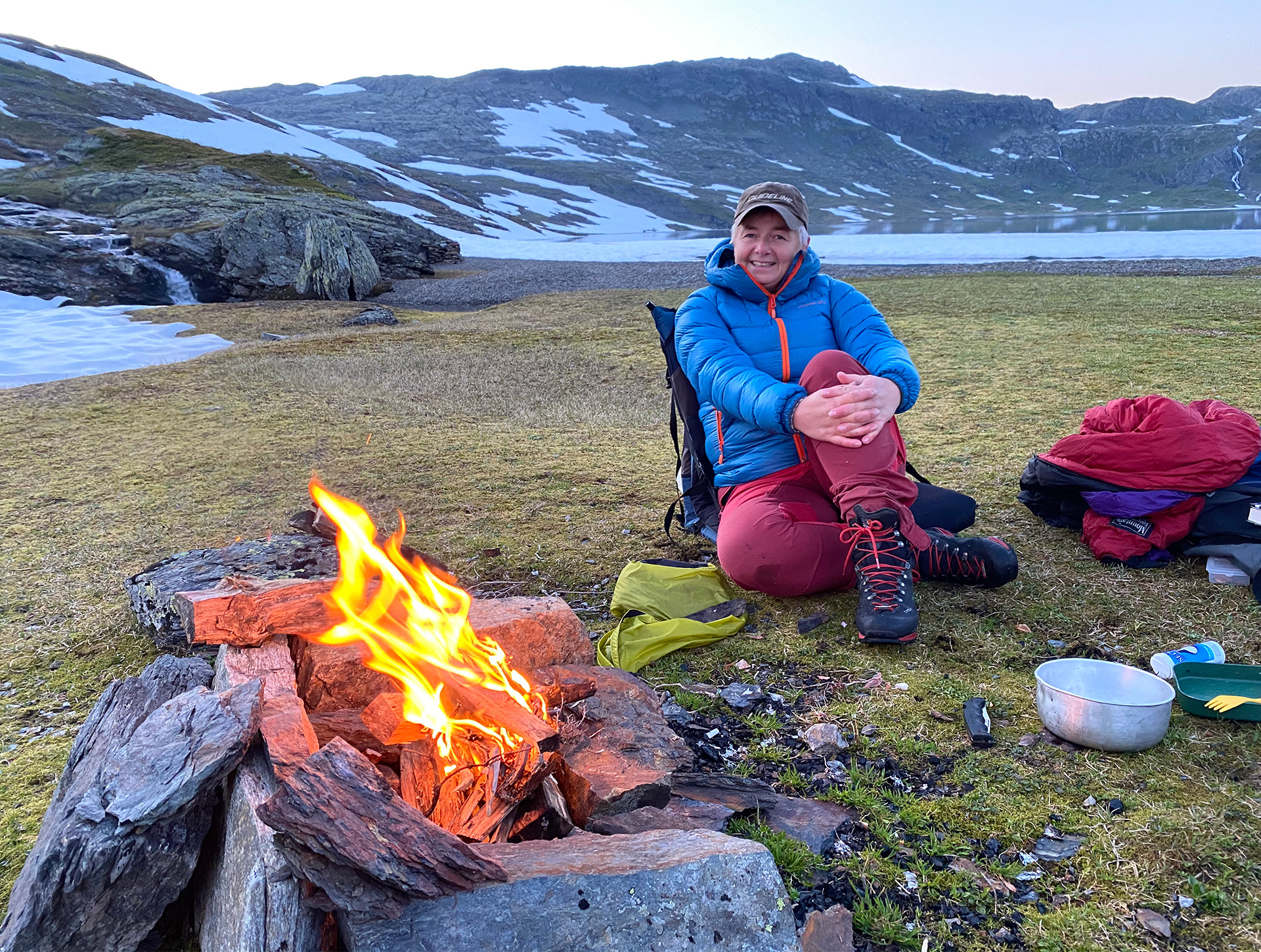
Background for protection and threats
Kvanndalen Protected Landscape was protected to safeguard a distinctive mountainous area that has untouched nature, rich plant life, valuable summer mountain farming areas and grazing landscape, and old and more modern cultural monuments left behind from mountain farming, hillside grazing, hunting, fishing and trapping. The objective of the protection is also to safeguard important wildlife habitats, and especially to secure an interconnected mountainous area and living conditions for the southernmost wild reindeer population in Europe. There are currently no major threats to the botanical heritage values found in Kvanndalen. Localities are often found in steep areas so that wear and tear from humans or grazing sheep do not cause any major problems. Heritage values related to the cultural landscape are threatened by birch trees and juniper bushes which are causing the area to become overgrown. This is particularly a problem in the mountain meadows and other areas below the tree line. There are no conditions connected to current use and traffic that constitute serious threats to Kvanndalen’s function as a wild reindeer habitat. There are few technical encroachments and little traffic in the protected area.
Plant life and wildlife
The vegetation in Kvanndalen Protected Landscape varies from barren mountainous areas to lush hillsides of birch trees and mountain meadows. Some areas are influenced by the nutrient-rich phyllite bedrock which provides the basis for a very rich plant life. These rich localities are a key heritage value in Kvanndalen. Among other things, visitors can find a small prevalence of alpine saxifrage, a plant that only grows a few places in Norway outside of Suldal and Hjelmeland. In addition, a large number of rare alpine plants has been recorded such as the small-white orchid and Ottertail Pass saxifrage. Kvanndalen valley has major heritage values related to its function as a wild reindeer habitat in Setesdal Vesthei-Ryfylkeheiane. There is an important wild reindeer migratory route over Litledalsfleene towards Kistenutenden and then across the valley to Djupetjørn. The higher areas in Kvanndalen Protected Landscape are also used each year as both winter and summer grazing grounds by several herds of bull reindeer. Smaller populations of moose and red deer live permanently in Kvanndalen valley. Kvanndalen valley has a very rich birdlife. In addition to species that are commonly found in Rogaland County’s mountain birch forests and high hills, there are also rarer species that nest in Kvanndalen valley such as bluethroats, Eurasian dotterels, common scoters and gyrfalcons. Read more about wild reindeer

Past use of the area
Many people considered Kvanndalen valley to be the best farming valley in Suldal. Large-scale farming conducted by hired shepherds took place in Kvanndalen valley between the 1920s and 1930s. One can still find traces of 10-12 mountain farms in the valley, and although not all of them were in operation at the same time, they are evidence of intensive utilization of the grazing resources found in the valley. Buildings can still be found at the Fleso, Hidlerberget, Svultanuten and Jensafet mountain farms. Stone shelters can be found at Bakkaleger and Torshidler which were used in connection with journeys through the valley.

Current use
Kvanndalen valley continues to be an important grazing area for sheep, and approximately 800 animals grazed in the area in 2013. Today, Stavanger Trekking Association has a tourist cabin at Svultanuten. This cabin was built as early as 1898. Trekking routes lead out from this cabin to Kvanndalsdammen and Roalkvam, through Kvanndalen valley to Haukeliseter and Skorpeskar to Sandvatn lake, and further on to Holmevasshytta cabin or Bleskestadmoen. Kvanndalshytta cabin has approximately 130 overnight stays each year and is mostly used during the summer and autumn. Kvanndalen valley has also been an important area for both big game and small game hunting. Moose and red deer hunting take place each year in the lower lying forests, and 15 hunting permits for wild reindeer were allocated in 2013. A lot of small game hunting also takes place in Kvanndalen valley. There is also good trout fishing in many of the area’s lakes and watercourses.

Sources and further reading
Verneforskrift på Lovdata Forvaltningsplan på verneområdestyrets nettstad Arkeologisk museum i Stavanger (1983a). Registreringar av arkeologiske kulturminne i Kvanndalen i tidsrommet 19- 24.06.83 og 31.07- 12.08.83. Stavanger Arkeologisk museum i Stavanger (1983b). Registrering av etnologiske kulturminner i Kvanndalen i tidsrommene 21.- 24.06 og 29.-30.09.83 i samband med planar om vasskraftutbygging. Stavanger. Bakka, Tryggve (1997). Stadnamn, vegar og verksemd i Dyraheio. AmS-Varia 16 Bang-Andersen, Sveinung (1983). Kulturminner i Dyraheio. AmS-Varia 12 Bang- Andersen, Sveinung (2004). Reinsdyrgraver i Setesdal Vesthei – analyse av gravenes beliggenhet, byggemåte og brukshistorie. AmS-Varia 40. Arkeologisk museum: Stavanger. Bang- Andersen, Sveinung (2008). De første jegerne i Dyraheio – utnyttelsen av Setesdal Vesthei i steinalder ca 7000-3500 år før nåtid. AmS-Varia 48. Arkeologisk museum: Stavanger. Brandal, Trygve og Tjeltveit, Njål (1996). Sau og hei. Sauehald og heiaføring i Ryfylke og på Haugalandet. Ryfylkemuseet. Brandal, Trygve og Tjeltveit, Njål (1998). Geit og støl. Geitehald i Ryfylke og Nord-Rogaland. Ryfylkemuseet. Foldøy, Oddveig (1988). Kvanndalen var ”den beste seterdalen” i Suldal. I Stavanger Turistforening, Velkommen til fjells. En håndbok for turer frå Haukeliseter i nord til Frafjord i sør. Frøyland-Pallelsen, Per (1987). Kvanndalen. I Stavanger Turistforening, Geologi for fjellvandrere. Fylkesmannen i Rogaland. Forvaltningsplan for Kvanndalen landskapsvernområde, Dyraheio landskapsvernområde og Holmavassåno Biotopvernområde i Suldal kommune, Rogaland. Fylkesmannen i Rogaland (1993). Verneplan for Kvanndalen landskapsvernområde, Dyraheio landskapsvernområde og Holmavassåno biotopvernområde i Suldal kommune, Rogaland. Meyer, Ole Berger og Astrid Botnen (1983.) Flora og vegetasjon i Kvanndalen, Suldal, indre Ryfylke. Botanisk institutt. Rapport 31. Universitetet i Bergen. Odden, A (2021). Naturmangfald og kulturminne i Kvanndalen og Dyraheio landskapsvernområde. SVR-Notat 1-2021. Prøsch- Danielsen, Lisbeth (1990). vegetasjonshistoriske studier frå Suldal og Sauda kommuner, Nord Rogaland. AmS- Rapport 2. Arkeologisk museum i Stavanger. Solheim, Pedersen Einar (1982). Stølsbruket i heiene. I Hallandsvik, J.E. (red.) Boka om heiene. Grøndahl & Søn Forlag. Steinnes, Audun (1988). Oversikt over botaniske verneverdiar i Rogaland. Økoforsk rapport. 1988:12. Ås-NLH. Strand, Olav m.fl (2012). Villreinens bruk av Setesdalsheiene. Sluttrapport fra GPS merkeprosjektet 2006–2010. NINA Rapport 694
